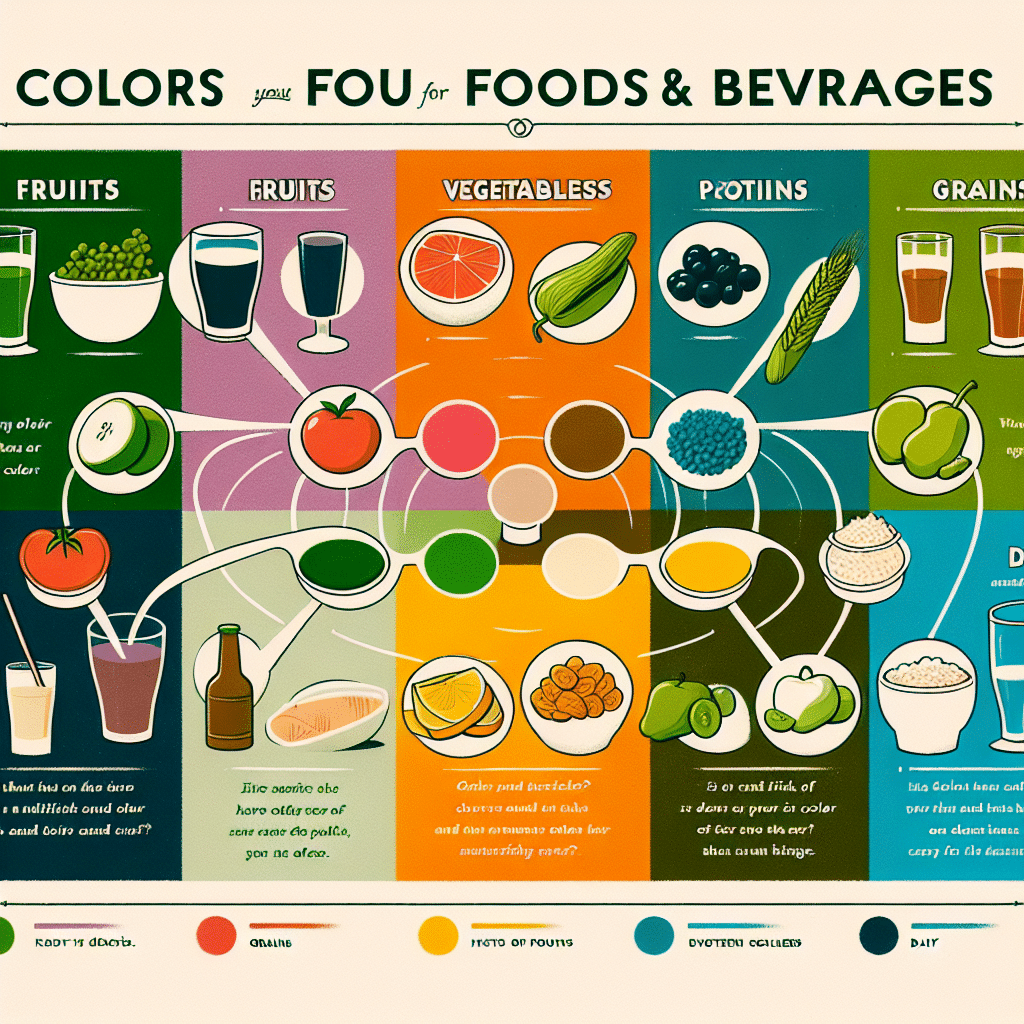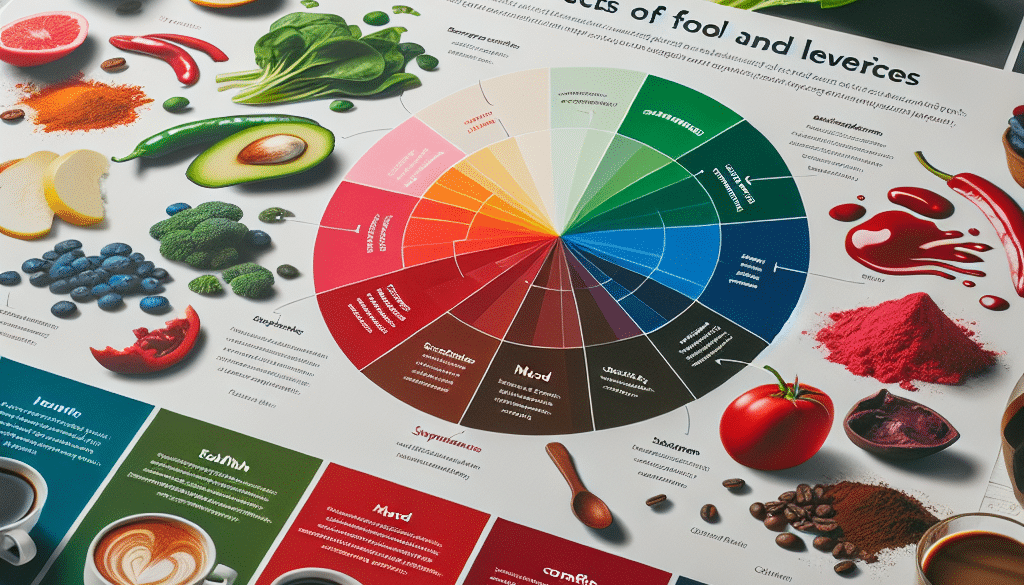Answering Questions about Color for Food and Beverage
-
Table of Contents
- Color Psychology in Food and Beverage: Enhancing Consumer Experience
- The Role of Color in Food and Beverage Choices
- Color and Taste Perception
- Case Studies: Color’s Impact on Sales
- Color Trends in Food and Beverage
- Regulations and Considerations
- Conclusion: The Power of Color in Food and Beverage
- Enhance Your Products with ETprotein’s Protein Offerings
Color Psychology in Food and Beverage: Enhancing Consumer Experience

The influence of color on consumer behavior is a fascinating aspect of marketing, especially within the food and beverage industry. The visual appeal of food can significantly affect taste perceptions, cravings, and even appetite. In this article, we delve into the psychology of color in food and beverage products, exploring how it can be used to enhance the consumer experience and influence purchasing decisions.
The Role of Color in Food and Beverage Choices
Color is often the first sensory interaction a consumer has with a product, and it sets the stage for the tasting experience. The right color can make food and drinks more appealing, while the wrong color can be off-putting. For instance, bright colors like red and yellow are often associated with sweetness, which is why they are commonly used in candy packaging. On the other hand, green is associated with health and freshness, making it a popular choice for salad packaging.
- Red: Stimulates appetite and is often used in fast-food logos.
- Yellow: Evokes happiness and is eye-catching in retail environments.
- Green: Represents health and is used to market organic or vegetarian products.
- Blue: Rare in nature as a food color, often used for products that want to convey a sense of difference or novelty.
Color and Taste Perception
Color not only influences our desire to purchase but also our taste perception. A classic example is the “white wine dyed red” experiment, where experts described flavors typically associated with red wine, proving that visual cues can override our taste buds. Similarly, the color intensity can affect perceived sweetness, with darker-colored solutions often judged as sweeter than lighter ones, even when the sugar content is the same.
Case Studies: Color’s Impact on Sales
Several case studies have demonstrated the impact of color on sales. For example, when Heinz introduced its green ketchup, sales soared due to the novelty and appeal to children. Another case is the use of color in soft drink branding, where certain brands have become synonymous with their color schemes, creating a strong brand identity that influences consumer loyalty.
Color Trends in Food and Beverage
Color trends can also dictate the popularity of certain products. The rise of “unicorn” foods, characterized by their vibrant, multi-colored appearance, is a testament to the power of visually appealing products in the age of social media. Similarly, the trend towards natural and organic foods has seen an increase in the use of natural colorants derived from fruits, vegetables, and spices.
Regulations and Considerations
When incorporating color into food and beverage products, it’s essential to consider regulatory guidelines. In many regions, there are strict rules about the types of colorants that can be used, especially concerning artificial vs. natural colors. Additionally, cultural perceptions of color can vary, so what works in one market may not work in another.
Conclusion: The Power of Color in Food and Beverage
In conclusion, color plays a crucial role in the food and beverage industry. It affects consumer behavior, taste perception, and can even drive trends. By understanding the psychology of color, companies can create more appealing products that stand out in a crowded market.
Enhance Your Products with ETprotein’s Protein Offerings
If you’re looking to enhance your food and beverage products, consider incorporating high-quality protein from ETprotein. Their range of organic bulk vegan proteins and L-(+)-Ergothioneine can add nutritional value to your products while maintaining a neutral taste and allergen-free attributes. With a commitment to non-GMO ingredients and purity over 98%, ETprotein is the ideal partner for your protein needs.
About ETprotein:
ETprotein, a reputable protein and L-(+)-Ergothioneine (EGT) Chinese factory manufacturer and supplier, is renowned for producing, stocking, exporting, and delivering the highest quality organic bulk vegan proteins and L-(+)-Ergothioneine. They include Organic rice protein, clear rice protein, pea protein, clear pea protein, watermelon seed protein, pumpkin seed protein, sunflower seed protein, mung bean protein, peanut protein, and L-(+)-Ergothioneine EGT Pharmaceutical grade, L-(+)-Ergothioneine EGT food grade, L-(+)-Ergothioneine EGT cosmetic grade, L-(+)-Ergothioneine EGT reference grade and L-(+)-Ergothioneine EGT standard. Their offerings, characterized by a neutral taste, non-GMO, allergen-free attributes, with L-(+)-Ergothioneine purity over 98%, 99%, cater to a diverse range of industries. They serve nutraceutical, pharmaceutical, cosmeceutical, veterinary, as well as food and beverage finished product distributors, traders, and manufacturers across Europe, USA, Canada, Australia, Thailand, Japan, Korea, Brazil, and Chile, among others.
ETprotein specialization includes exporting and delivering tailor-made protein powder and finished nutritional supplements. Their extensive product range covers sectors like Food and Beverage, Sports Nutrition, Weight Management, Dietary Supplements, Health and Wellness Products, and Infant Formula, ensuring comprehensive solutions to meet all your protein needs.
As a trusted company by leading global food and beverage brands and Fortune 500 companies, ETprotein reinforces China’s reputation in the global arena. For more information or to sample their products, please contact them and email sales(at)ETprotein.com today.












